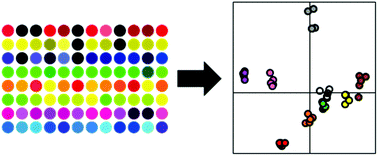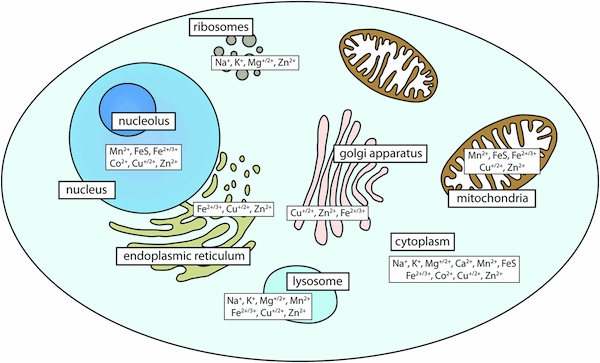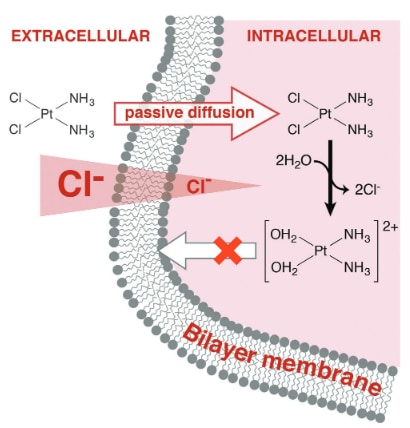Research
Fluorescent platforms for environmental sensing
This project is funded by a Westpac Research Fellowship (2016-2019).
Fluorescence offers a cheap alternative to mass spectrometry techniques for analysis of complex environments. We are developing sensing arrays to distinguish and quantify chemical species (particularly metal ions) in the environment.

Tools to study labile pools of metal ions
This project is funded by an ARC Discovery Grant, 2015-2017, with Tony White, University of Melbourne.
The pool of labile, or bioavailable, metal ions in a cell is crucial to the function of metalloproteins and the maintenance of metal homeostasis. We are developing probes for biologically-relevant metal ions, that can be used to provide information about how labile metal pools change in conditions of health and disease.

Investigations of the interactions of cisplatin with cells
This project is funded by an ARC Discovery Grant, 2015-2017, with Trevor Hambley, School of Chemistry (USyd).
Despite intense research attention on platinum anticancer drugs, much remains to be learnt about how they interact with cells in exerting both their theraupetic effects and toxic side effects. We are developing chemical tools to study platinum metabolism in cells.

Tools to study redox regulation in biological systems
This project is funded by an ARC Discovery Early Career Award (2012-2014) and a Ramaciotti Establishment Grant (2013-2014).
Many diseases are associated with perturbations in redox state, so developing ways to measure biological redox state will help us to better understand these diseases and suggest ways to cure or treat them. We are developing probes that allow the monitoring of cellular redox state by MRI or fluorescence microscopy.
Two of our redox probes can be purchased from Stressmarq Biosciences - please see the following links for more information: NpFR1 and FCR1.
